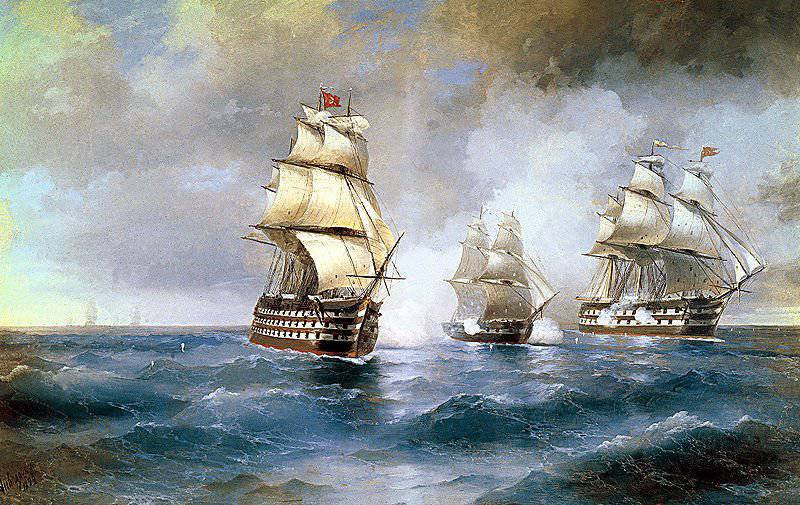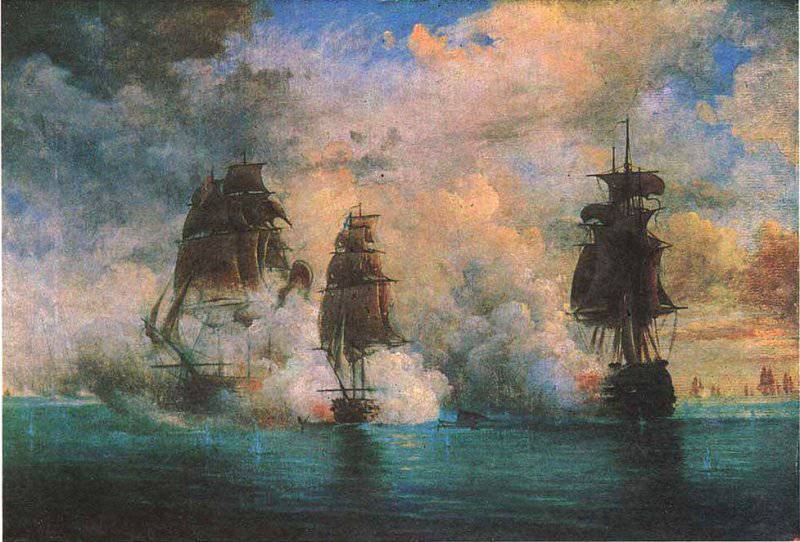For the anniversary of the heroic battle of the brig "Mercury" with the Turkish squadron at the entrance to the Bosphorus 26 May 1829

Realizing that an unequal battle could not be avoided, Lieutenant-Commander A.I. Kazarsky, the brig commander, announced a gathering of officers. Corps lieutenant naval navigators IP Prokofiev proposed to take the battle, and if there was a threat of the capture of the brig by the Turks, blow up the ship in order to avoid its capture by the enemy. The officers supported this decision unanimously, and the crew greeted the decision of the commanders with a single "hurray." The team prepared the ship for battle, and a loaded pistol was left at the agreed place so that at the last moment the last of the surviving officers of the brig could detonate the ammunition remaining on the ship. Alexander Ivanovich Kazarsky, who for the battles near Varna, in 1828, was awarded a golden saber and had a reputation as one of the most courageous officers of the Black Sea Fleet. the spar is knocked down or water will arrive in the hold to such an extent that it will be impossible to pump it out, then, having fallen with some ship (in order to blow it up at once), the one who is still alive will light the cruise chamber with a pistol shot.
Having approached the "Mercury" at a distance of a gunshot, the Turkish ships began to fire from the bow guns. Using the tenfold superiority in artillery, the Turks intended to force the small Russian brig to surrender. At about half past two on the "Mercury" a strong fire started, which, however, was quickly extinguished. Taking advantage of maneuverability, the Mercury deftly avoided Turkish artillery volleys. At the same time, the Russian guns managed to wise an aimed return fire. The heavily damaged Turkish flagship was forced to cease fire and lie in the drift. By evening, “Mercury” managed to fend off from the second Turkish pursuer.
The unequal battle of "Mercury" lasted about four hours. The brave brig received more than three hundred injuries, but remained afloat and without any problems joined the squadron, moving to its aid. The losses of Mercury were relatively small: the 4 of a member of the heroic crew was killed, the 8 of the sailors were injured, and the brig commander was wounded. The enemy suffered much greater losses. The damage inflicted by the Russian brig on two Turkish battleships was incommensurable with the damage inflicted on the brig by a superior opponent.
For the greatest military prowess shown by the crew, the brig "Mercury" was highly honored with a big award - the "Mercury" received a stern St. George flag and a pennant. The highest decree prescribed henceforth to have in the Russian fleet a ship called the “Mercury”.
The squadron commander, Admiral M.P. Lazarev, organized the construction of a memorial monument with the inscription: “To Kazarsky. Progeny as an example. ” The monument was built in 1834 on the basis of the Russian fleet in Sevastopol on Michmansky Boulevard with funds raised by ordinary sailors.


Information